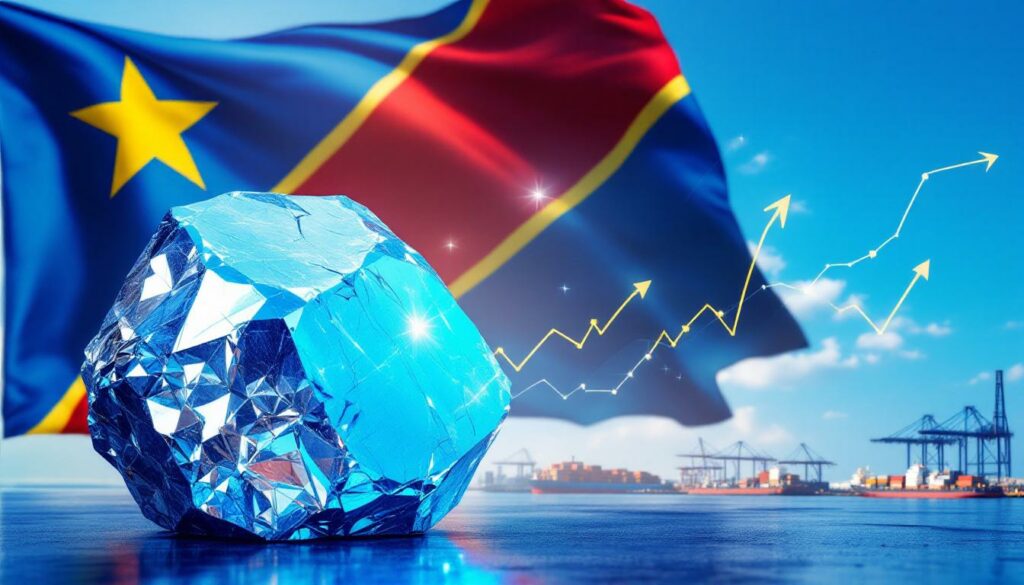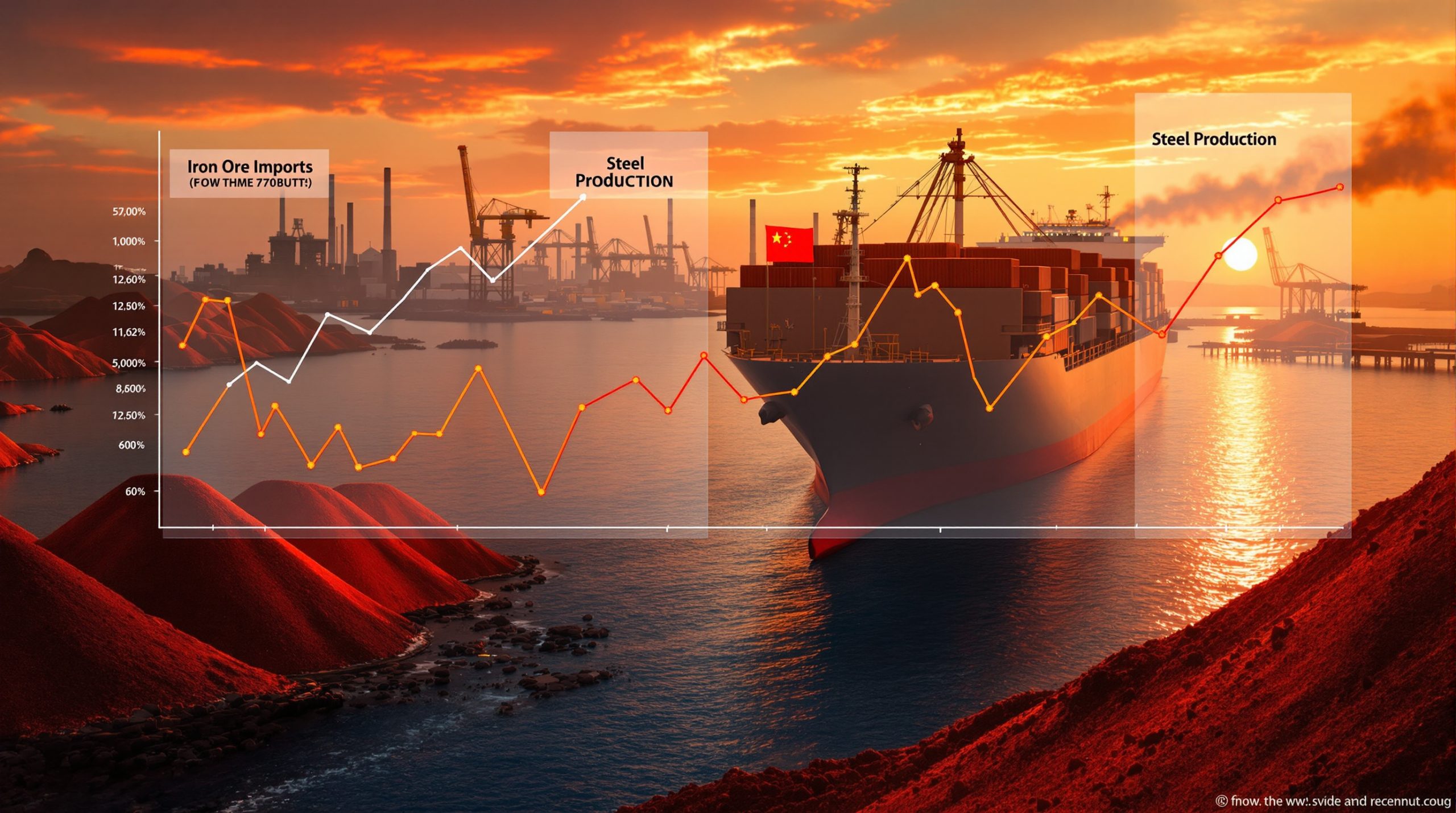Understanding the DRC Cobalt Export Ban: Market Implications and Future Outlook
The Democratic Republic of Congo's decision to ban cobalt hydroxide exports has created significant ripples throughout global battery supply chains, with implications extending far beyond the African nation's borders. As the world's leading cobalt producer, controlling approximately 70% of global output, the DRC's export policies directly impact everything from electric vehicle production to consumer electronics manufacturing.
What is the DRC Cobalt Export Ban?
Background and Initial Implementation
The Democratic Republic of Congo initially implemented a four-month cobalt export ban in February 2025, targeting cobalt hydroxide shipments – a critical precursor material for battery production. This bold move represented a significant shift in the country's resource governance approach, aimed at capturing more value from its vast mineral wealth.
In June 2025, the DRC government extended this ban for an additional three months, continuing to block the flow of this essential battery material to global markets. According to government representatives, the extension aims to "return the market to healthy levels rather than create a deficit," suggesting a strategic approach to price stabilization rather than market manipulation.
The suspension specifically affects cobalt hydroxide exports, which typically leave the DRC via truck shipments to neighboring countries before reaching international ports. This intermediary product requires further processing to create battery-grade cobalt sulfate, making it a critical chokepoint in the global critical minerals supply chain.
Regulatory Framework and Potential Future Developments
Industry sources report that discussions about potential export quotas after the ban period have emerged, though specific details remain scarce. The absence of clear guidelines on quota specifications or implementation procedures has created uncertainty among miners and downstream consumers alike.
"We're still waiting for clarity on what happens after September," notes a DRC-based mining executive who requested anonymity. "The regulatory framework is evolving rapidly, and companies need time to adapt their operations accordingly."
This policy shift represents a significant evolution in the DRC's approach to resource governance, potentially signaling a more interventionist stance toward its strategic mineral assets. Most industry stakeholders anticipate clearer regulatory guidelines by September-October 2025, which will be crucial for long-term planning and investment decisions.
The ban's implementation has highlighted the delicate balance between the DRC's desire to capture more value from its natural resources and global manufacturers' need for stable supply chains. This tension will likely define the cobalt market's trajectory for years to come.
How Has the Market Responded to the Extended Ban?
Price Movement Comparison
Market response to the June extension announcement was surprisingly muted compared to the initial ban. Standard grade cobalt metal prices increased only 0.2% in the 12 assessments following the extension announcement, according to Fastmarkets data. This contrasts dramatically with the 43.2% price surge observed in the 12 sessions after the initial February ban.
Fastmarkets' assessment for cobalt standard grade (in-warehouse Rotterdam) stood at $15.35-16.10 per lb on July 11, 2025, reflecting relatively stable market conditions despite the extended export suspension. However, cobalt hydroxide prices have increased a substantial 116% on a mid-point basis since the initial ban implementation, demonstrating the market's bifurcated response to the policy.
The divergence between metal and hydroxide price movements highlights the complex supply chain dynamics at play, with hydroxide—the directly affected material—experiencing significantly more volatility than refined metal products.
Market Sentiment Factors
Several factors explain the market's relatively calm response to the extension:
- Anticipation effect: Unlike the initial surprise announcement, market participants largely anticipated the extension, allowing for advanced preparation
- Seasonal dynamics: The summer months traditionally see slower demand across battery material markets
- Inventory positioning: Many consumers had already secured sufficient inventory ahead of scheduled maintenance closures
- Trading patterns: Intertrade liquidity for both cobalt metal and hydroxide has been notably slower compared to the February-March period
"The extension was priced in," explains a European trader. "Most buyers had already adjusted their purchasing strategies after the first announcement, so we're seeing a much more measured response this time around."
This rational market behavior suggests a maturing understanding of supply chain risks among cobalt consumers, with more sophisticated inventory management strategies emerging in response to geopolitical uncertainties.
When Will Supply Chain Tightness Materialize?
Inventory Dynamics and Critical Timeframes
September 2025 has emerged as the consensus "critical point" for cobalt hydroxide inventory levels, according to multiple market participants interviewed by Fastmarkets. Current inventory drawdown is occurring at a measured pace, partially buffered by seasonal demand patterns and pre-positioning efforts.
The three-month journey time from Africa to China creates a significant lag between export policy changes and physical market impacts. Material arriving in Chinese ports during May likely shipped before the initial ban took effect, creating a temporary buffer against immediate shortages.
"The real test comes in September when the pre-ban shipments are fully absorbed and maintenance season ends," notes a Shanghai-based battery materials analyst. "That's when we'll see if there's enough material to meet resurgent demand."
Industry analysts project market tightness to emerge around September-October 2025, with potential for significant commodities market volatility if alternative supply sources cannot compensate for the DRC shortfall.
Production and Force Majeure Considerations
CMOC Group, a major cobalt producer, increased 2024 cobalt production by an impressive 106% to 114,000 tonnes. Their first quarter 2025 production was 21% higher than the same period in 2024, indicating robust supply growth before the ban took effect.
However, IXM (CMOC's trading arm) issued force majeure notices on contracts in June 2025, signaling disruption to scheduled deliveries. This wasn't an isolated incident—multiple Western producers and at least one Chinese cobalt producer in the DRC have issued similar notices.
These force majeure declarations have significant contractual implications, potentially allowing suppliers to renegotiate delivery terms or pricing structures. The ripple effects through downstream supply chains could amplify the market impact beyond simple volume constraints.
What Are the Import Statistics Revealing?
Chinese Import Patterns
Chinese cobalt hydroxide imports from January to May 2025 were 7% lower than the same period in 2024, reflecting the initial impact of the export suspension. However, these imports were still 78% higher than in 2023, indicating significant stockpiling before and during the early ban period.
The DRC accounted for an overwhelming 99% of Chinese cobalt hydroxide imports during this period, totaling 248,300 tonnes. This extraordinary concentration highlights China's vulnerability to DRC supply disruptions despite diversification efforts.
June import statistics, scheduled for release later in July, are considered crucial for understanding future market direction. Analysts will closely monitor these figures for evidence of accelerating inventory depletion or successful supply diversification.
Port Stocks and Supply Chain Logistics
Significant hydroxide port stocks remain in Durban (South Africa) and Dar es Salaam (Tanzania), temporarily buffering the supply disruption. These regional logistics hubs have become increasingly important as material monitoring points for market participants.
- Durban port: Stocks decreasing but not yet at concerning levels
- Dar es Salaam port: Retains substantial hydroxide inventories
- Shanghai port: Hydroxide deliveries expected to decline sharply by August
Under current conditions, the earliest significant cobalt hydroxide flows from DRC to China would resume in December 2025, assuming the ban remains for the full extension period. This creates a potential 2-3 month supply gap that must be addressed through inventory management or alternative sourcing.
How Are Buyers Adapting to Supply Constraints?
Alternative Supply Sources
Chinese buyers are increasingly turning to recycled supply and mixed hydroxide precipitate (MHP) to compensate for reduced DRC hydroxide availability. MHP imports to China increased 23% January-May 2025 compared to the same period in 2024, highlighting this growing trend.
Indonesian MHP now constitutes a significant portion of China's cobalt intermediate feed, with Chinese-backed projects in Indonesia ramping up production to meet demand. While MHP cannot fully replace DRC volumes due to different processing requirements and cobalt content, it provides critical supply diversification during the ban period.
"Indonesian MHP is becoming our lifeline," reports a procurement manager at a major Chinese battery materials producer. "We've had to adjust our refining processes, but it's keeping our production lines running."
Recycled cobalt materials are also seeing increased adoption, though technical challenges remain in achieving consistent quality and scale from these secondary sources.
Battery Manufacturer Strategies
Most battery makers in China are currently relying on long-term contract deliveries negotiated before the ban, providing temporary insulation from spot market volatility. However, force majeure declarations may increasingly impact these arrangements as the ban continues.
Production rates have been strategically adjusted to align with available feedstock, with many facilities taking advantage of the seasonal summer slowdown to conduct maintenance activities. This coordinated approach helps minimize the immediate impact of supply constraints.
Battery producers are implementing several adaptive strategies:
- Feedstock blending: Mixing available hydroxide with increasing percentages of MHP
- Specification adjustments: Modifying production processes to accommodate varying input qualities
- Inventory stretching: Extending usage of existing materials through optimized production scheduling
- Strategic relationships: Strengthening ties with diversified suppliers outside the DRC
Analysts expect Chinese refiners to continue meeting long-term contract obligations through H2 2025, though potentially with adjusted delivery schedules and compositions.
What Are the Long-Term Market Implications?
Supply Chain Restructuring
The ban is accelerating efforts to diversify cobalt supply sources globally, with significant implications for future market structure. Indonesian MHP production facilities are gaining strategic importance within global supply chains, attracting increased investment and expansion capital.
Chinese-backed assets in Indonesia are maintaining elevated material flows, leveraging vertical integration advantages to ensure priority access to alternative cobalt sources. This reinforces China's dominant position in the cobalt processing sector despite the DRC disruption.
Western refiners are exploring alternative sourcing options and feedstock blending strategies, though with less established supply chains in Indonesia compared to their Chinese counterparts. This could potentially widen the competitive gap in processing capacity unless new partnerships emerge.
The crisis has highlighted several structural vulnerabilities:
- Geographic concentration: Over-reliance on DRC production
- Processing bottlenecks: Limited intermediate processing capacity outside China
- Contractual weaknesses: Force majeure cascading effects
- Inventory transparency: Limited visibility into actual stock levels
These challenges are driving fundamental reassessments of cobalt supply chain resilience across the battery industry.
Price Outlook and Market Dynamics
Analysts project firming prices as market tightness emerges in September-October, with hydroxide price movements expected to precede metal price adjustments. The current sideways price movement is likely to continue until inventory shortages materialize more concretely.
Long-term contracts may face renegotiation as force majeure notices impact delivery obligations, potentially creating a two-tier market between those with secured supply and those relying on spot purchases. This could amplify price volatility and create competitive advantages for well-positioned buyers.
"We're entering uncharted territory for cobalt markets," explains a London-based metals analyst. "The traditional price relationship between metal and hydroxide has fundamentally shifted, and we're still discovering what the new equilibrium looks like."
What Does This Mean for the Global Battery Supply Chain?
Electric Vehicle Industry Impact
Battery manufacturers must navigate potential feedstock constraints in late 2025, with implications for production planning and cost structures. Price volatility could affect battery production costs and ultimately EV pricing if sustained beyond temporary inventory buffers.
Supply chain resilience strategies are becoming increasingly important for automakers, with some accelerating plans to adopt lower-cobalt or cobalt-free battery chemistries. However, these technological transitions require significant lead time and cannot fully mitigate near-term disruptions.
Regional battery manufacturing hubs may face varying degrees of disruption based on inventory positions:
- China: Most exposed to immediate hydroxide constraints but best positioned with MHP alternatives
- Europe: Facing potential downstream impacts through cathode material imports
- North America: Limited direct hydroxide dependency but exposed through component supply chains
EV manufacturers with the most diversified battery supply chains and chemistry options will navigate this period with the least disruption to production schedules.
Strategic Stockpiling Considerations
Cobalt Holdings' postponed IPO and planned 6,000-tonne purchase highlights the market uncertainty created by the ban. Strategic stockpiling initiatives may accelerate as supply concerns grow, potentially exacerbating short-term market tightness while building longer-term buffers.
Government and corporate stockpiling programs could increasingly influence market dynamics, particularly if coordinated buying emerges from major consuming nations. Japan, South Korea, and European nations have all indicated interest in securing critical minerals & energy transition supplies through various mechanisms.
Transparent inventory reporting is becoming increasingly important for market stability, though significant gaps remain in visibility across the supply chain. Better data on actual inventory levels could help prevent panic buying and more accurately price supply risk.
FAQs About the DRC Cobalt Export Ban
Why hasn't the market reacted more strongly to the ban extension?
The extension was widely anticipated, unlike the initial surprise announcement in February. Additionally, the summer period typically sees reduced demand in battery materials markets, and many buyers had already secured sufficient inventory through advance purchasing strategies.
How significant is the DRC to global cobalt supply?
The DRC accounts for approximately 70% of global cobalt production and 99% of Chinese cobalt hydroxide imports, making it the dominant global supplier. This concentration creates inherent vulnerability in global supply chains despite diversification efforts.
What alternatives exist to DRC cobalt hydroxide?
Key alternatives include recycled cobalt materials, mixed hydroxide precipitate (MHP) from Indonesia, and cobalt from other producing countries like Australia. However, these sources cannot fully replace DRC volumes due to quality differences, processing requirements, and capacity limitations. Some companies are even looking at the Cobalt Blue expansion to help diversify supply sources away from the DRC.
When will the market likely experience significant supply tightness?
Industry analysts project September-October 2025 as the period when inventory drawdowns will create noticeable market tightness, assuming the ban remains in place for the full extension period. This timeline accounts for shipping lag, existing inventories, and seasonal demand patterns.
The mining industry evolution continues to be shaped by such strategic resource policies, challenging companies to develop more resilient and diversified supply chains.
Disclaimer: This analysis represents current market conditions based on available information. Future developments, including potential regulatory changes or supply adjustments, may significantly alter market outcomes. Readers should consult professional advisors before making investment or procurement decisions based on this analysis.
Ready to Stay Ahead of Critical Mineral Discoveries?
Don't miss the next major opportunity in commodities like cobalt—Discovery Alert's proprietary Discovery IQ model delivers instant notifications on significant ASX mineral discoveries, turning complex data into actionable insights. Explore why historic discoveries can generate substantial returns by visiting Discovery Alert's dedicated discoveries page and position yourself ahead of the market.




